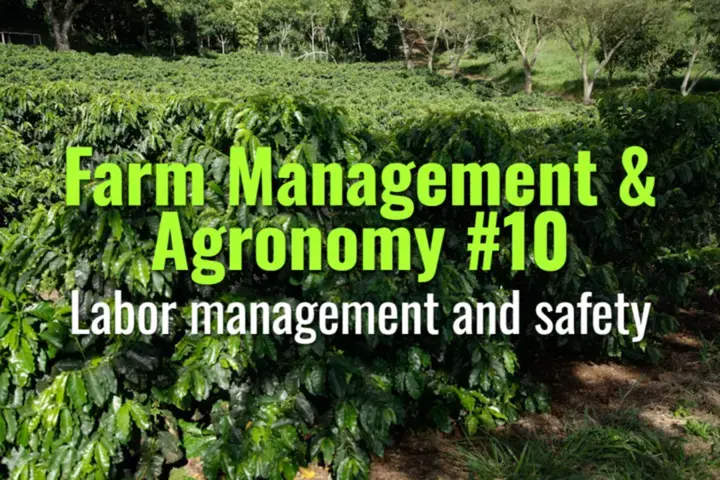Labor management and safety
This topic covers the principles of labor management and worker safety in coffee farming, including recruitment, fair practices, health protection, and compliance with ethical and legal standards.
- Coffee Basics Nerds
- 2 min read
Article 10 of 12 in Farm Management & Agronomy/

Importance of Labor in Coffee Farming
- Coffee production is labor-intensive, especially for selective harvesting, pruning, and post-harvest handling.
- Effective labor management ensures both farm productivity and worker well-being.
Labor Management Practices
- Recruitment: Hire based on seasonal needs, often increasing workforce during harvest.
- Training: Provide instruction on safe harvesting, pruning, processing, and equipment use.
- Fair contracts: Clear agreements on wages, tasks, and working hours reduce disputes.
- Motivation & retention: Good conditions, timely pay, and fair treatment encourage loyalty and productivity.
Worker Safety Concerns
1. Physical Safety
- Hazards: Sharp tools, heavy loads, steep slopes.
- Measures: Safety gear (gloves, boots, protective clothing), ergonomics training.
2. Chemical Safety
- Hazards: Exposure to pesticides, herbicides, fertilizers.
- Measures:
- Proper protective equipment (masks, gloves, goggles).
- Training on safe handling and storage.
- Restricted re-entry periods after spraying.
3. Health & Welfare
- Provide clean drinking water, sanitation facilities, and rest areas.
- Ensure access to medical support in case of accidents.
- Minimize child labor and forced labor; comply with international labor standards.
Ethical and Certification Standards
- Fairtrade, Rainforest Alliance, UTZ: Require safe working conditions, fair wages, and respect for workers’ rights.
- Compliance improves market access and consumer trust.
Challenges in Labor Management
- Labor shortages during peak harvest in some regions.
- Rising wages increase production costs.
- Migrant laborers may face exploitation without oversight.
Best Practices
- Organize harvest schedules to maximize efficiency.
- Rotate tasks to prevent worker fatigue.
- Encourage worker participation in decision-making.
- Provide regular safety training and monitoring.
Lasting Importance
Labor management and safety are central to sustainable coffee farming. Protecting workers’ rights, health, and dignity not only ensures compliance with global standards but also supports higher productivity, better quality, and a more resilient coffee sector.